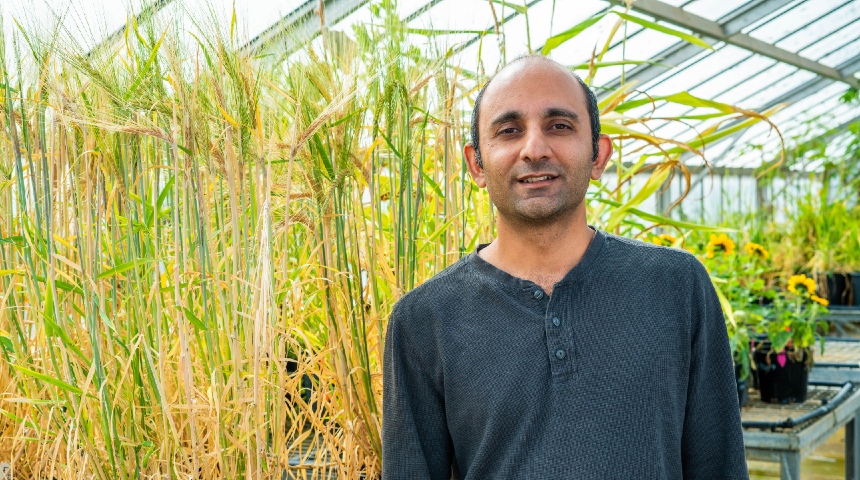
Scientists at the Harry Butler Institute have demonstrated how smart crop selection could help address regional climate change in Australia.
“Australia has approximately 3,727,210 km2 of land used for agricultural crops, the majority of which is in southwest Western Australia and southeast Australia,” said Dr Jatin Kala, Senior Lecturer in Atmospheric Science at Murdoch University.
“This presents a potential opportunity to reduce regional warming via crop albedo enhancement.”
Dr Kala’s research has found that by increasing crop albedo – the amount of light reflected from the surface of an object – by 0.1, monthly average daily maximum temperatures fell by −1.0 °C to −1.2 °C during the cropping season.
The monthly highest maximums were reduced by up to −1.4 °C to −1.6 °C.
“What we’re exploring is referred to as land-based geo-engineering. The aim is to use existing agricultural croplands, which account for approximately 35%–40% of global land use, to increase the albedo of the land surface.”
Crop albedo can be increased by altering existing farming practices, like planting different varieties. Other methods such as adopting conservation agriculture to keep darker organic materials below the ground could also help reduce temperature extremes.
“Australia is likely to experience more temperature extremes over the coming decades, highlighting the urgent need to develop effective climate adaptation and mitigation strategies,” said Dr Kala.
“While recent studies have investigated the potential for altering urban land-use via the use of green and cool roofs, urban greening and irrigation, the large expanse of agricultural land presents a major opportunity in the fight against climate change.”
The research highlights the importance of using regional climate models to assess climate change and develop solutions.
Under current rates of warming, a recent study shows global mean temperature increase of 1.5 °C relative to pre-industrial levels is expected to be reached between 2030 and 2052.
“We are not suggesting that everybody should start growing more reflective crops tomorrow,” said Dr Kala.
Rather, in deciding what varieties of crops we should grow in Australia, the albedo of the crops should be a factor to consider, especially when these crops are grown over very large areas.
Dr Jatin Kala
“It should also be noted that in our simulation, we assume that more reflective crops are grown everywhere across Australia.
“While this is certainly not realistic to implement in real life, this does allow us to estimate the maximum potential cooling benefit of growing more reflective crops.”
The research was undertaken in collaboration with Dr Annette Hirsch at the Climate Change Research Centre at the University of New South Wales.
Read the full paper.
This research supports the United Nations Sustainable Development Goal 13 to take urgent action to combat climate change and its impacts.
